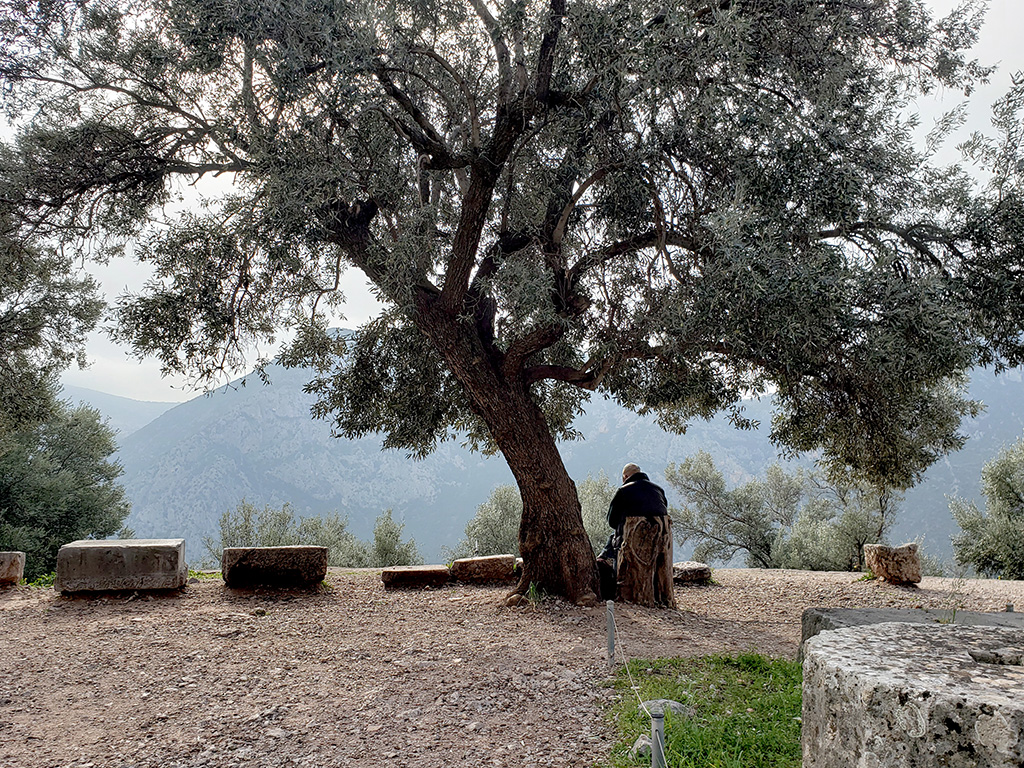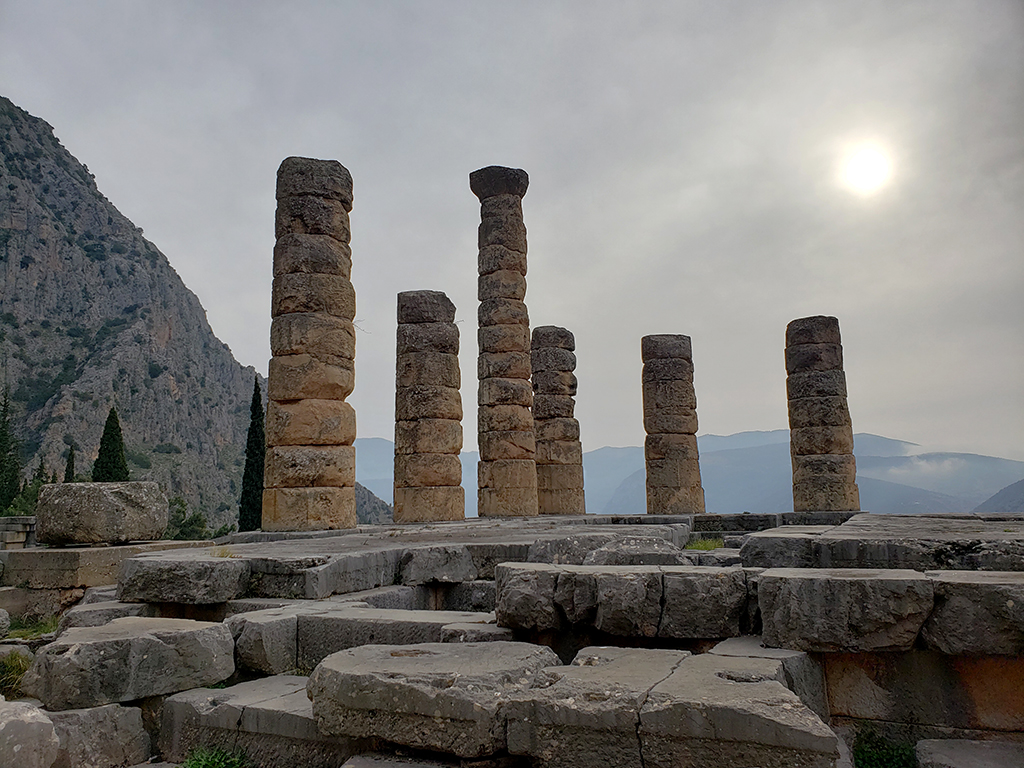
On our second and final day in Delphi we woke up early and made our way to the archaeological sites of Ancient Delphi, located roughly ten minutes by foot from the town center along the main road.
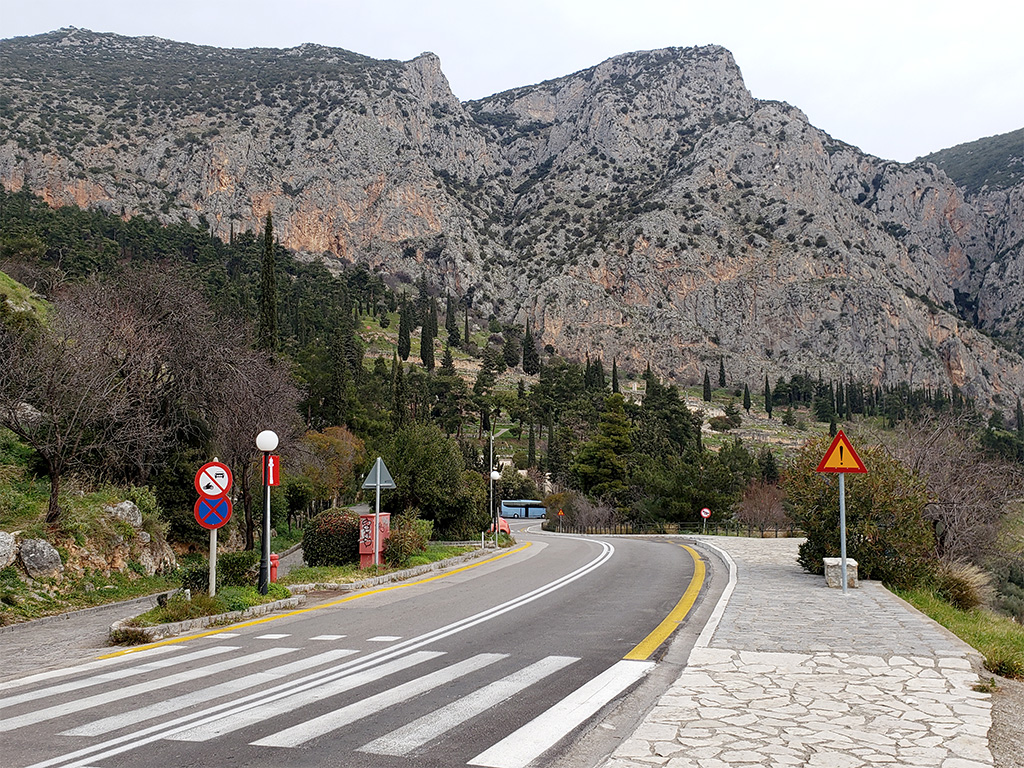
Ancient Greeks considered Delphi to be the center or “naval” of the world. From approximately 800 BC it was an important religious site. Representatives from various city states around Greece would pilgrimage to Delphi to make offerings, obtain prophecies from the famous Oracle, and build monuments of gratitude that also served as opportunities to show off their wealth and importance.
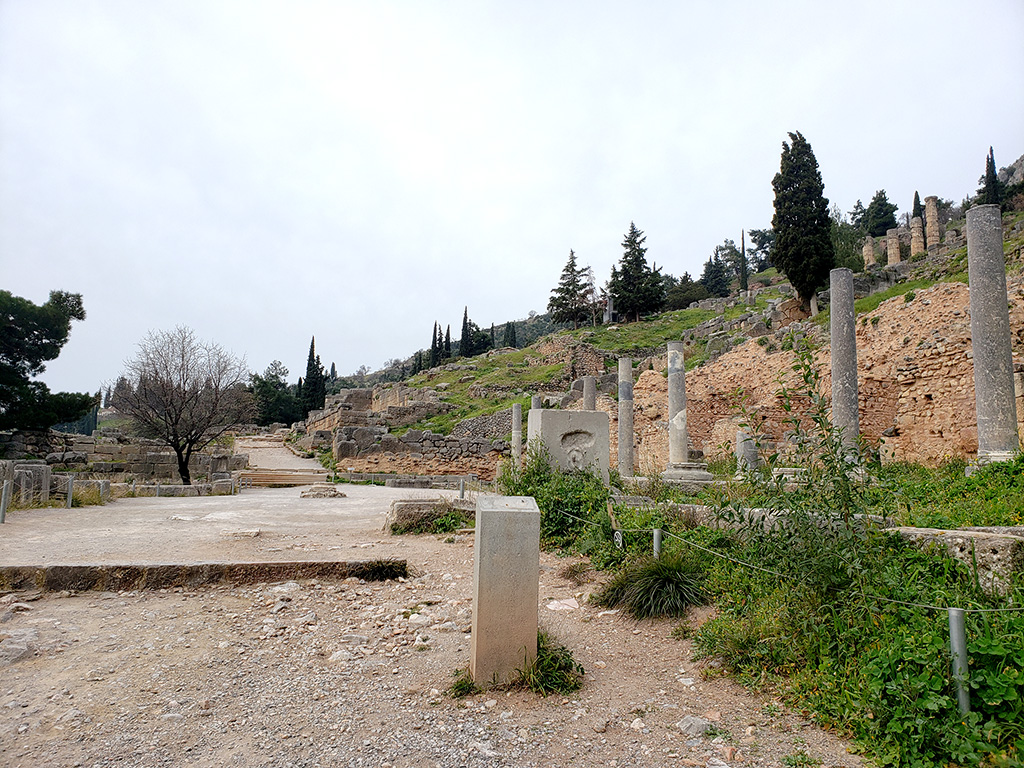
Like the Ancient Greeks we entered the Delphi sanctuary along a road known as the Sacred Way, which takes a gradual and circuitous route up the side of the mountain towards the Temple of Apollo at the top.
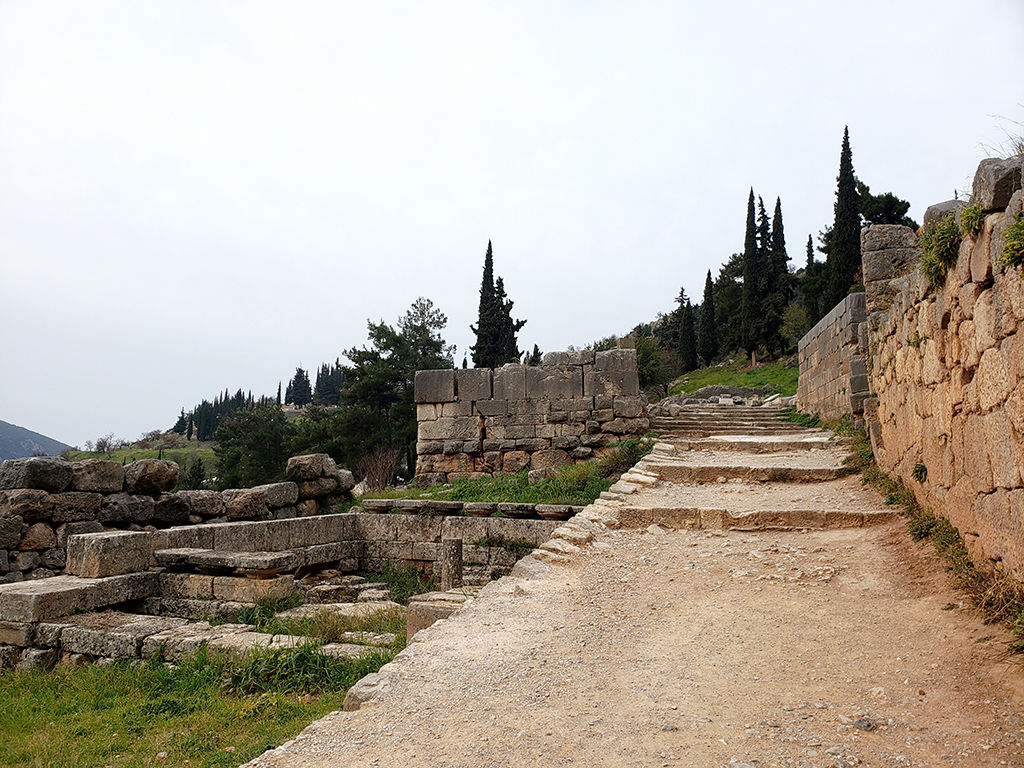
The Sacred Way was once lined with columns and ornate monuments known as treasuries, built by the various city states. When new, these monuments would have been ornate, constructed from glistening marble and filled with valuable artifacts and spoils of wars.
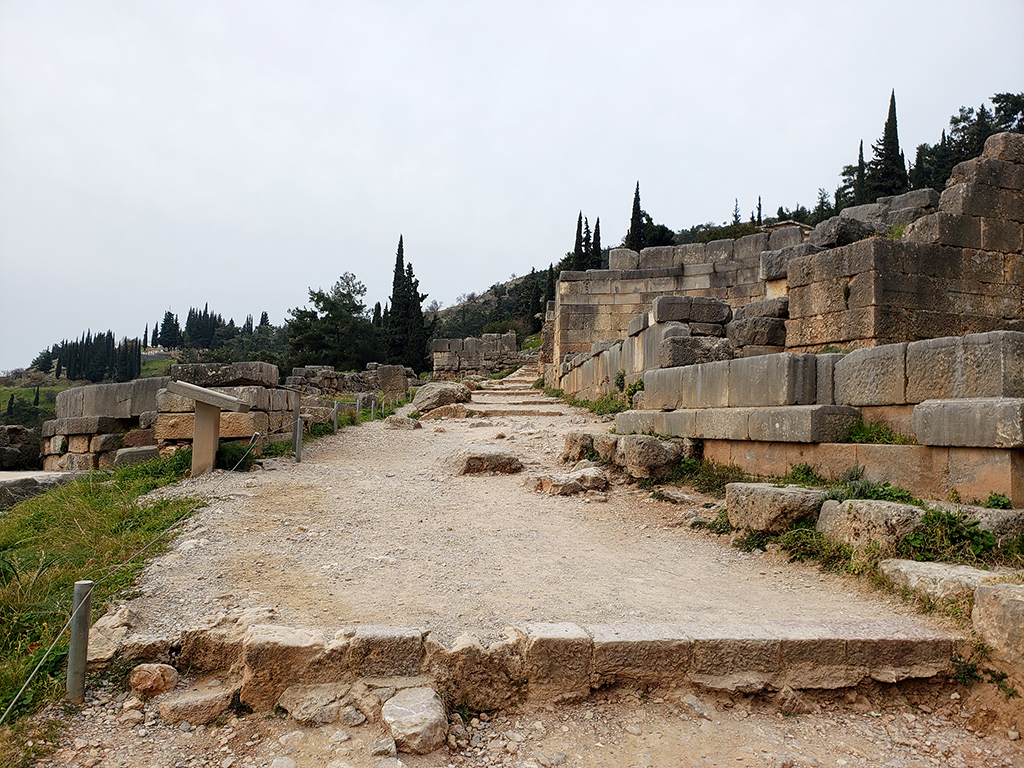
What is left now only hints at what was there: some of the more valuable and fragile items uncovered during excavations a century ago are now housed in the Delphi Archaeological Museum on the edge of the archaeological site, which we also visited .
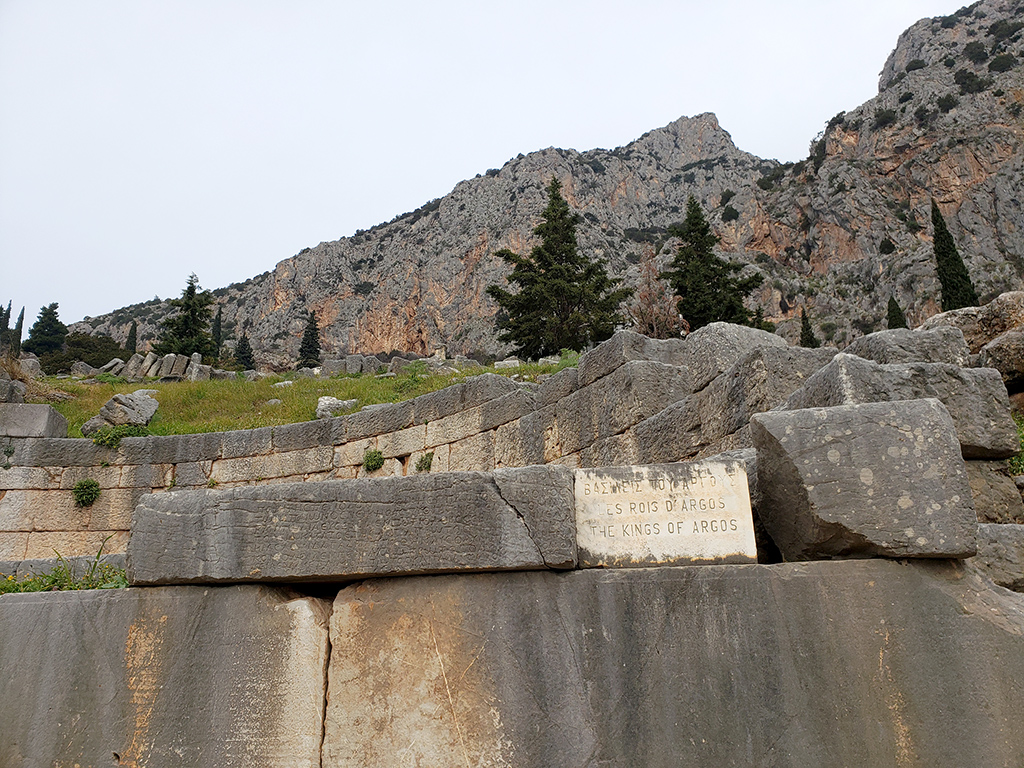
Only the Athenian Treasury has been extensively restored. It takes the form of a small but attractive temple in the Doric style.
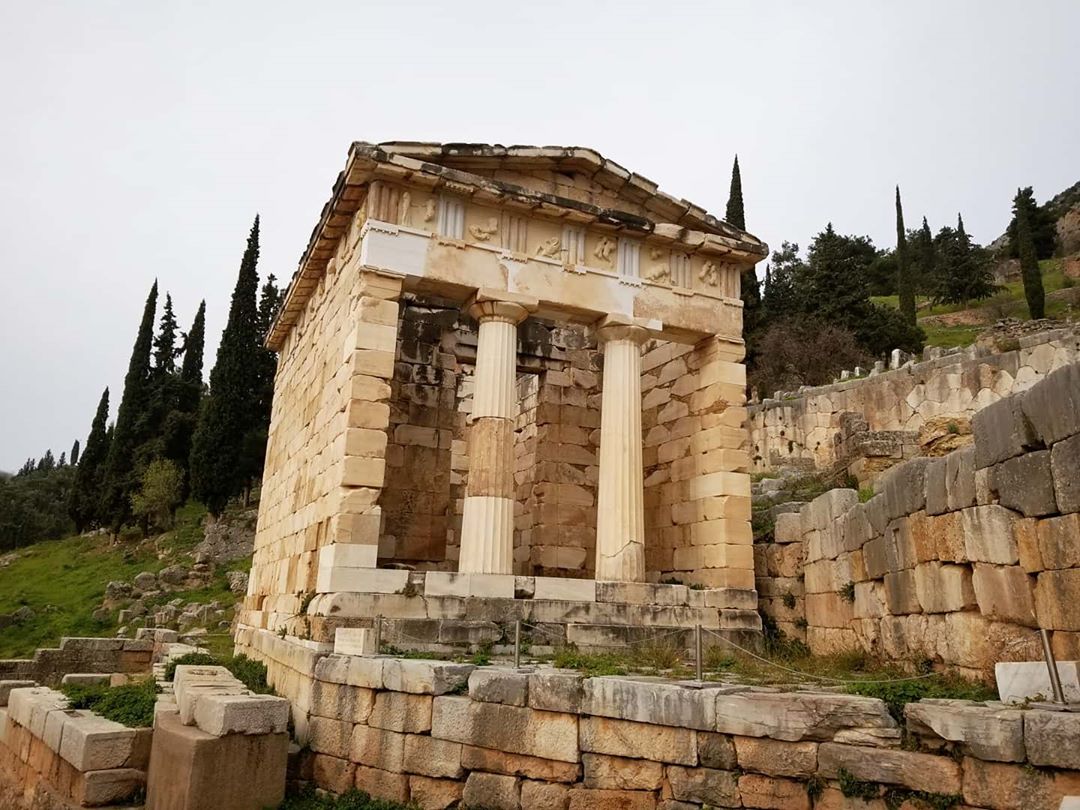
Nearby is a round, thimble-like stone known as the Omphalos of Delphi. To Ancient Greeks these stones symbolized Delphi’s place as the “naval” of the Earth. Another more ornate Omphalos stone is on display in the museum.
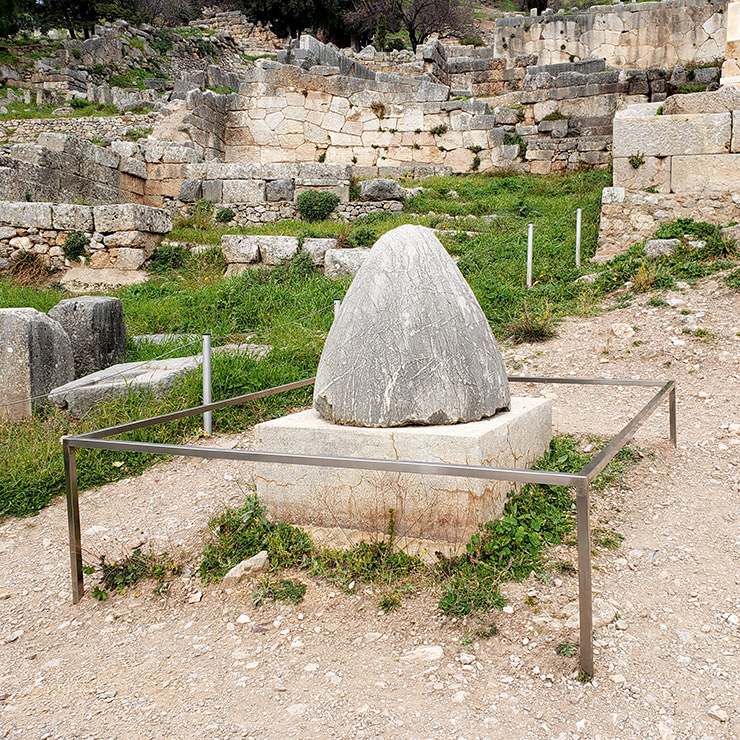
We also passed the Rock of Sybil, a jagged stone platform on which the Ancient Greeks believed the very first Oracle of Delphi (or “Pythia”) had stood around 800 BC to proclaim her ability to make prophecies. Generations of High Priestesses at the Temple of Apollo served as Oracles from the 8th century BC through to the 4th century AD when the site was destroyed by Christians and the prophecies ended.
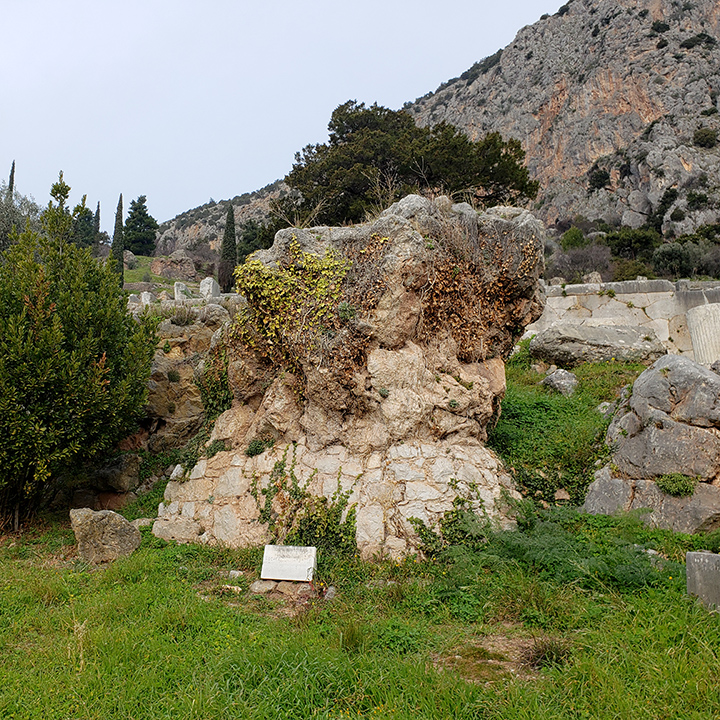
Hiking onwards and upwards to the Temple of Apollo we passed the Polygonal Wall, a large retaining wall that supports the temple above it. The wall is composed of tightly interlocking geometric stones.
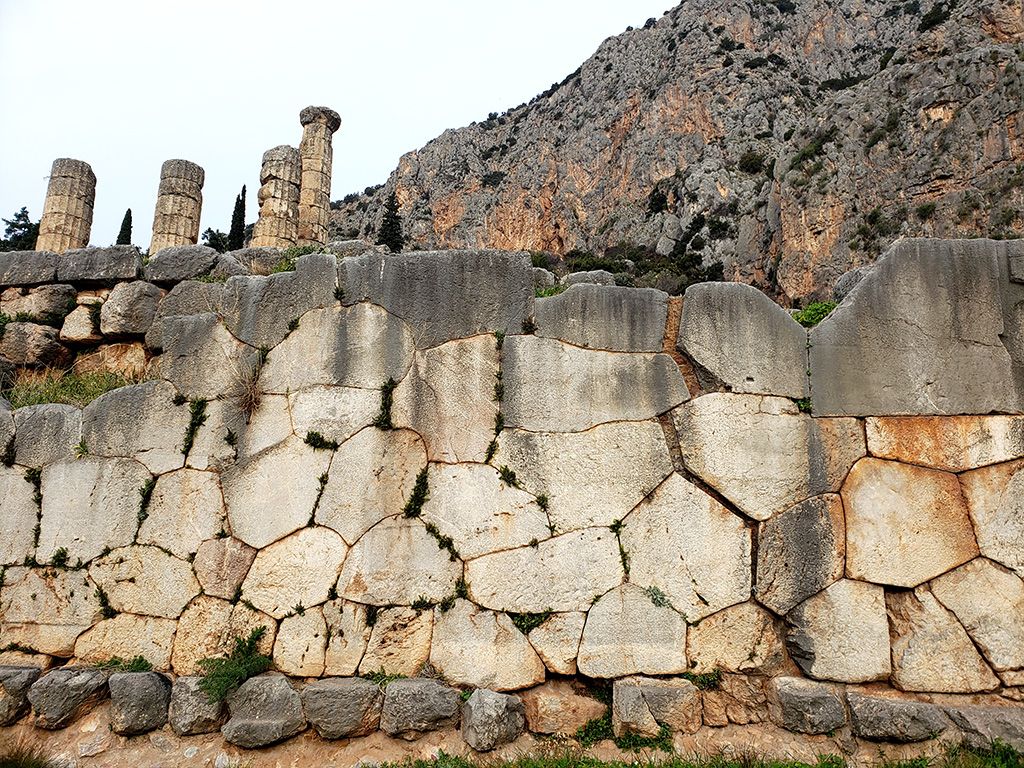
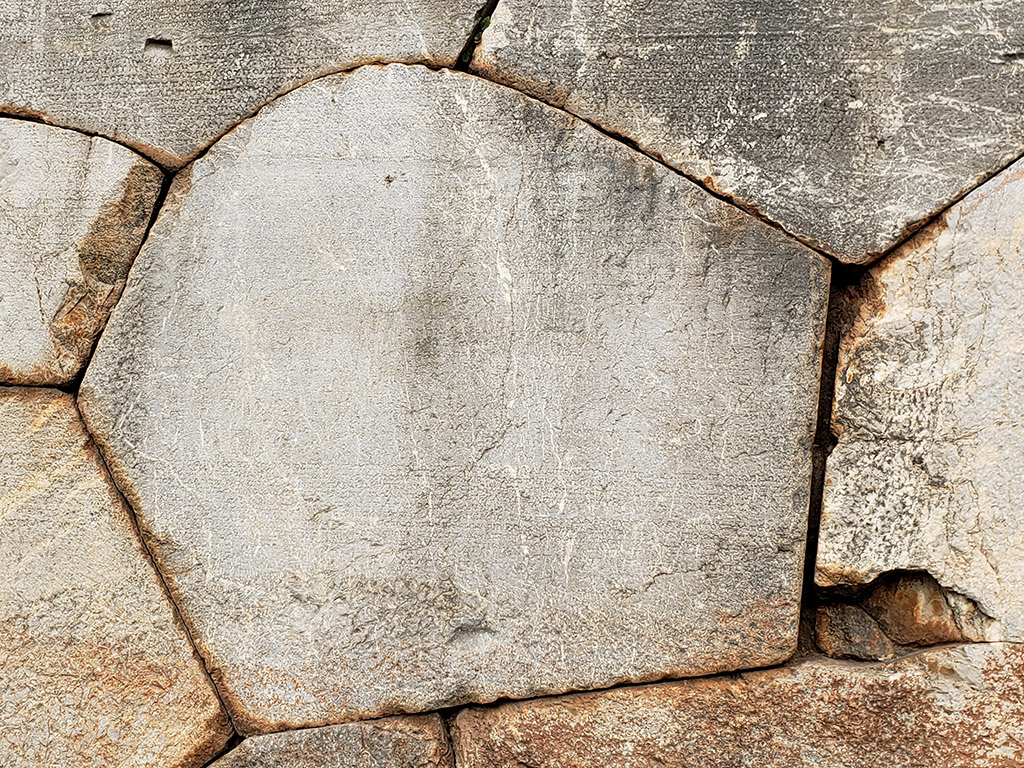
The stones themselves are carved with fine inscriptions. Many are what is known as “manumissions” or declarations of freedom for former slaves. In Ancient Greece, slaves served not for life but rather for predetermined time periods or until they had worked to earn their freedom. By placing the freedom declaration near the Temple of Apollo a slave’s owner was symbolically “selling” the slave to the god Apollo, meaning that there could be no future human owner.
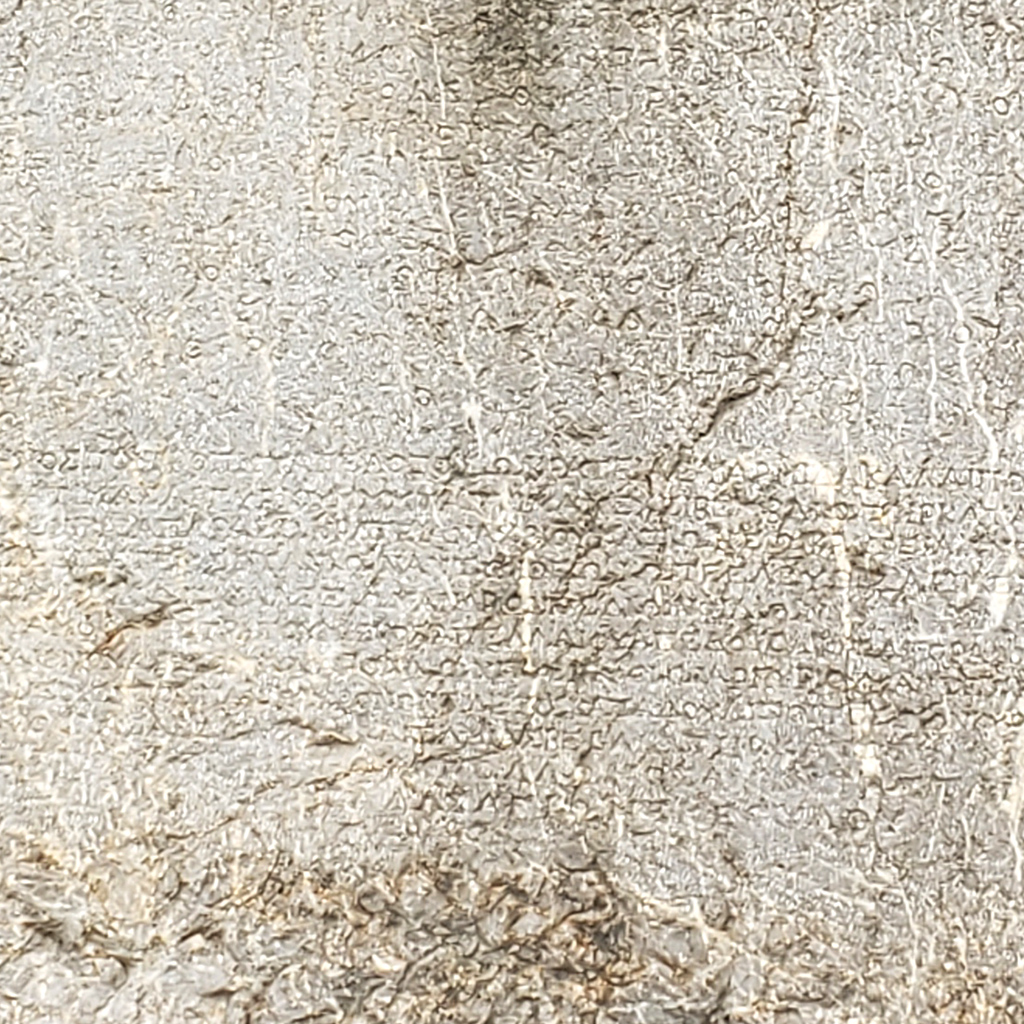
We also noticed a modern replica of the original Serpent Column. The original was cast in bronze in 479 BC to celebrate a great defeat of the Persian army; it was later stolen, and ended up in Constantinople (now Istanbul) at the Hippodrome where it remains.
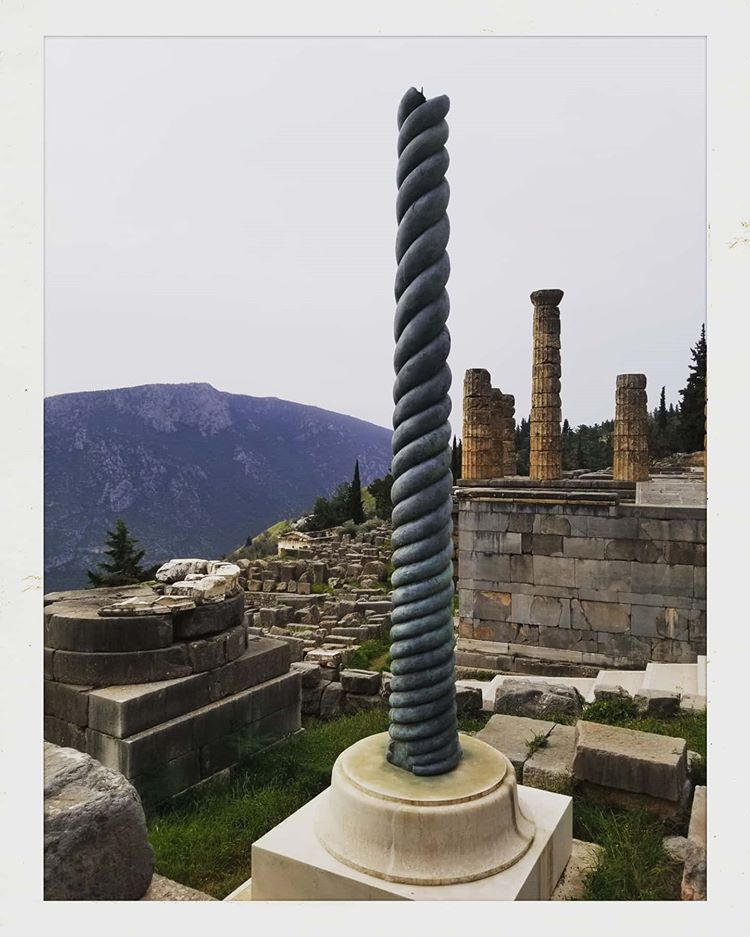
We finally arrived at the remains of the Temple of Apollo, or more specifically, the sixth and final version of the the temple, built in the 4th century BC. This temple is where the generations of Oracles presided, sitting in the center of the temple while making their cryptic “utterances” to important visiting rulers. The prophecies given here lead to history-changing decisions: wars were launched or aborted.
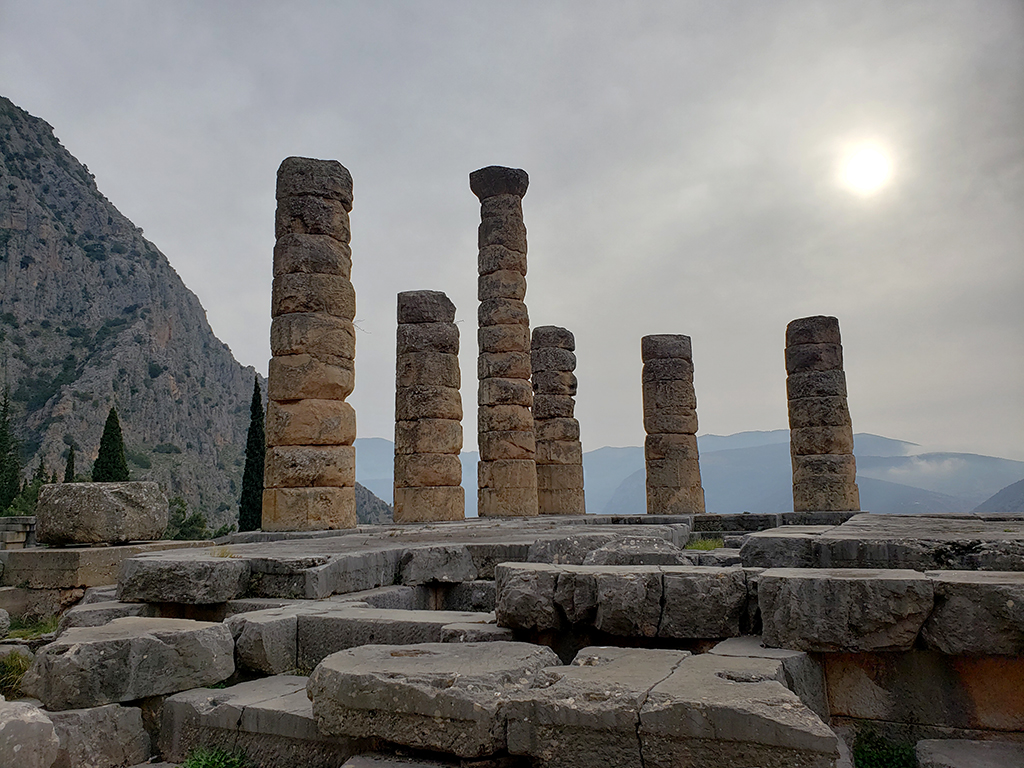
Only a handful of the many columns that once held up the roof of the temple remain today, but they are enough to hint at the original scale. In the center, where the oracles sat, it is theorized that the volcanic fumes seeping from cracks in the rocks below may have lead to their strange and semi-nonsensical utterances. This is disputed, though, and it’s obvious that the vagueness of the predictions left them open to wide interpretation, and therefore less likely to be proven overtly wrong.
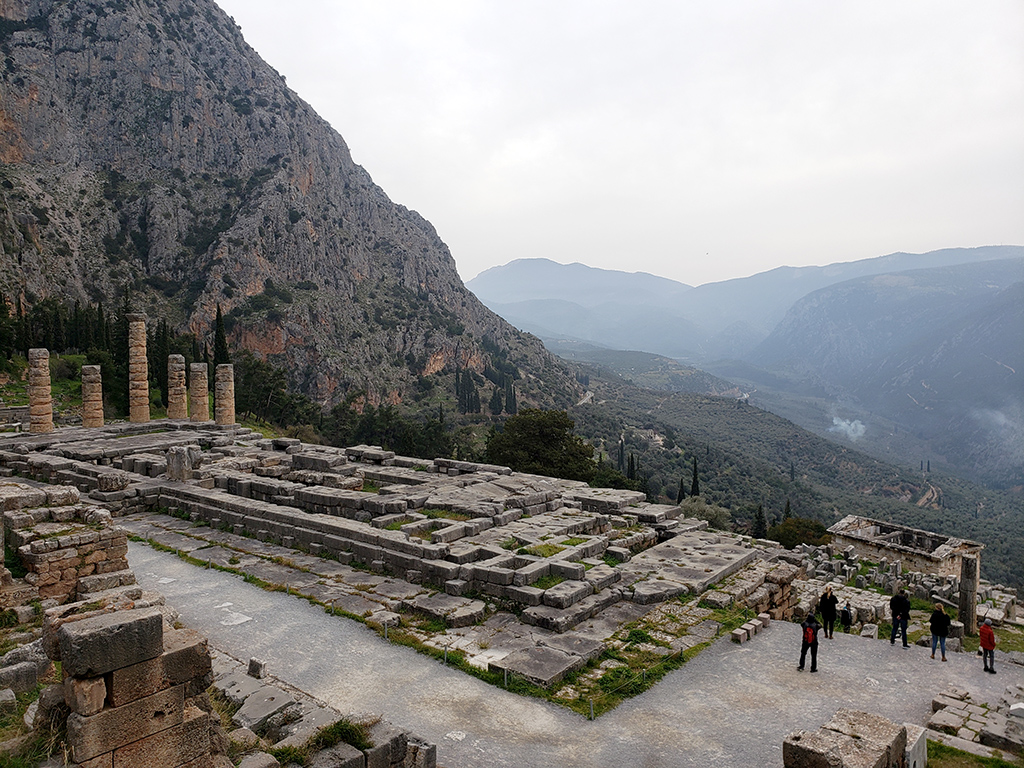
The temple was historically decorated with the Delphic Maxims. Many of these 147 short phrases have stood the test of time such as “know thyself,” “acquire wealth justly,” and “be happy with what you have”.
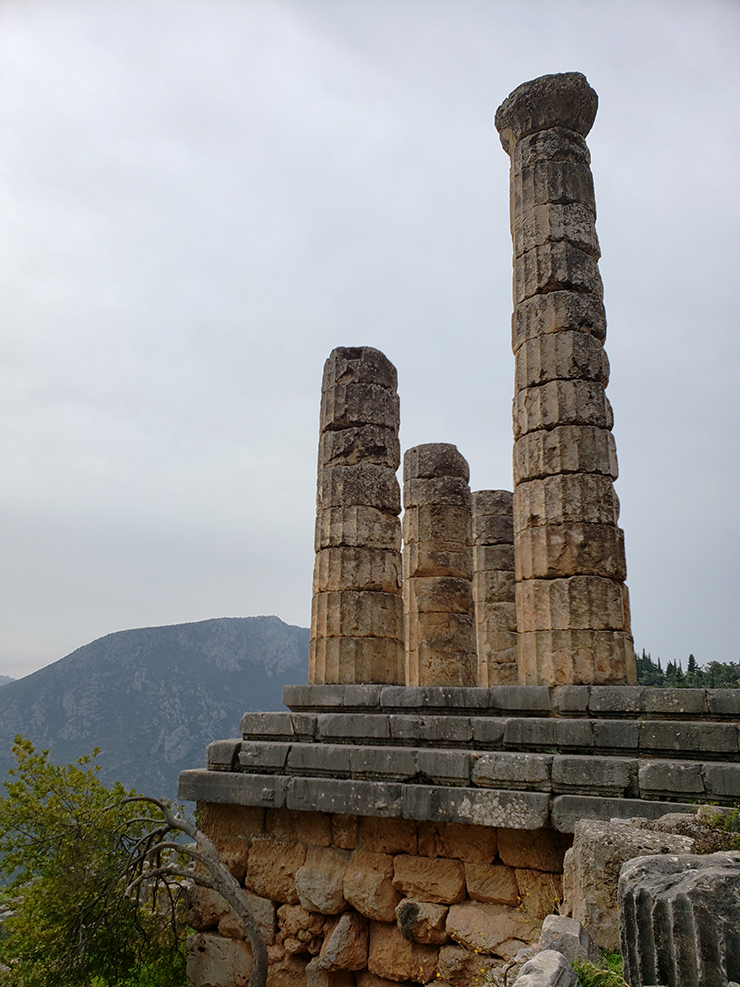
Even higher on the hill than the temple we found the Ancient Theater of Delphi. This theater once sat up to 5,000 people and was used for music and poetry competitions during the Pythian Games, held roughly every four years for about 1000 years. The athletic events were held in the nearby Stadium of Delphi, which sadly is now closed to visitors indefinitely due to rock slides.
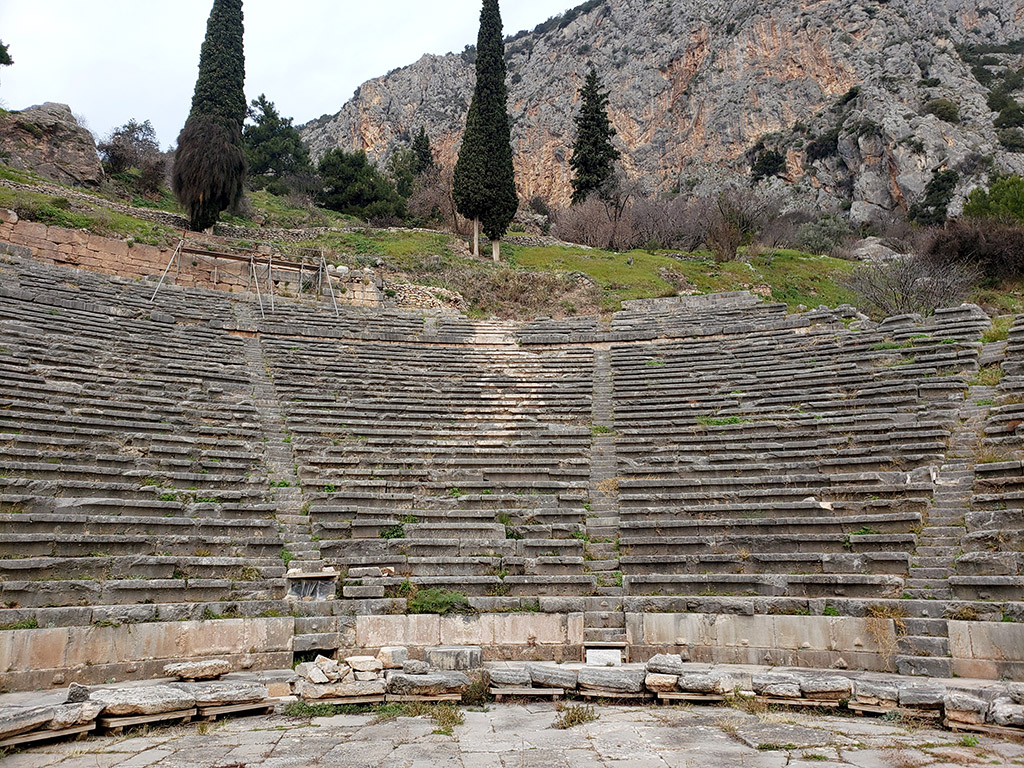
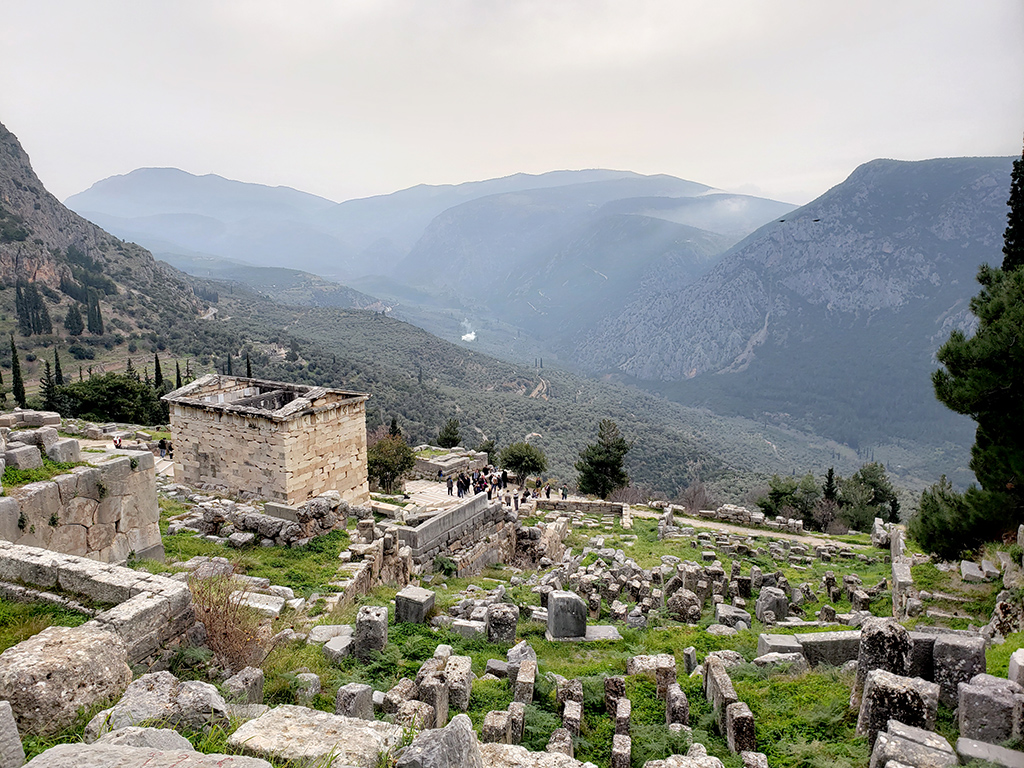
We worked our way back down to the entrance, now taking more time to notice the great views of the surrounding valleys. It is no mystery why the Ancient Greeks chose Delphi for their most sacred spot.
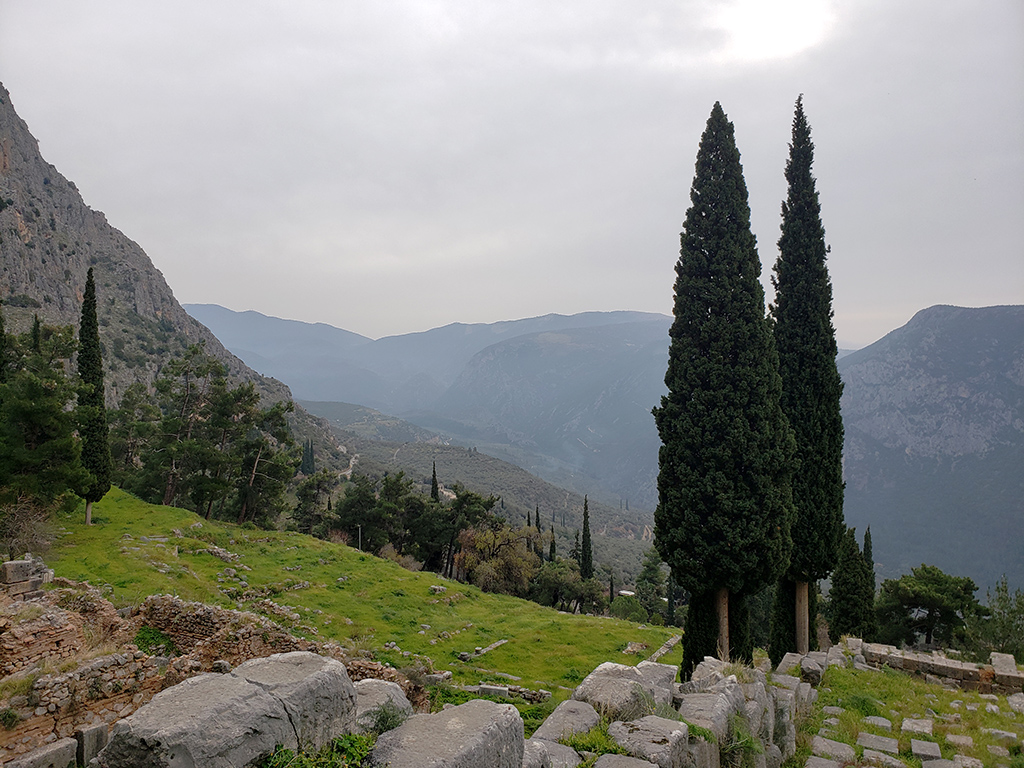
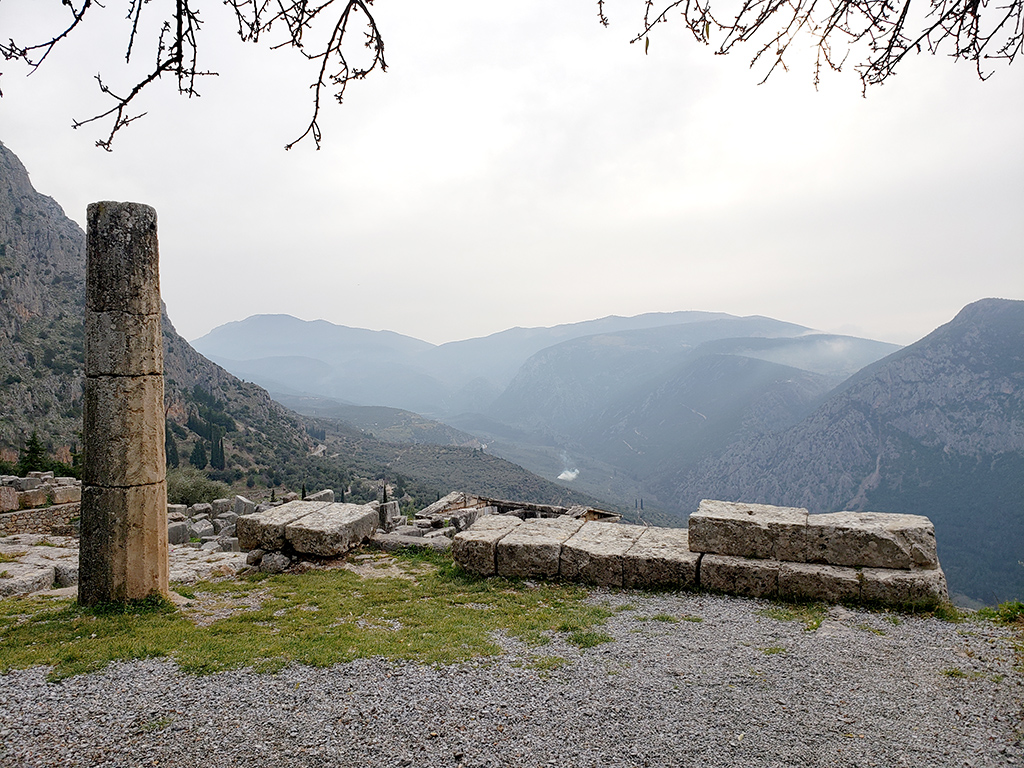
Even in Ancient Delphi there are cats wandering, sleeping on the rocks, and optimistically asking for food or a pat.
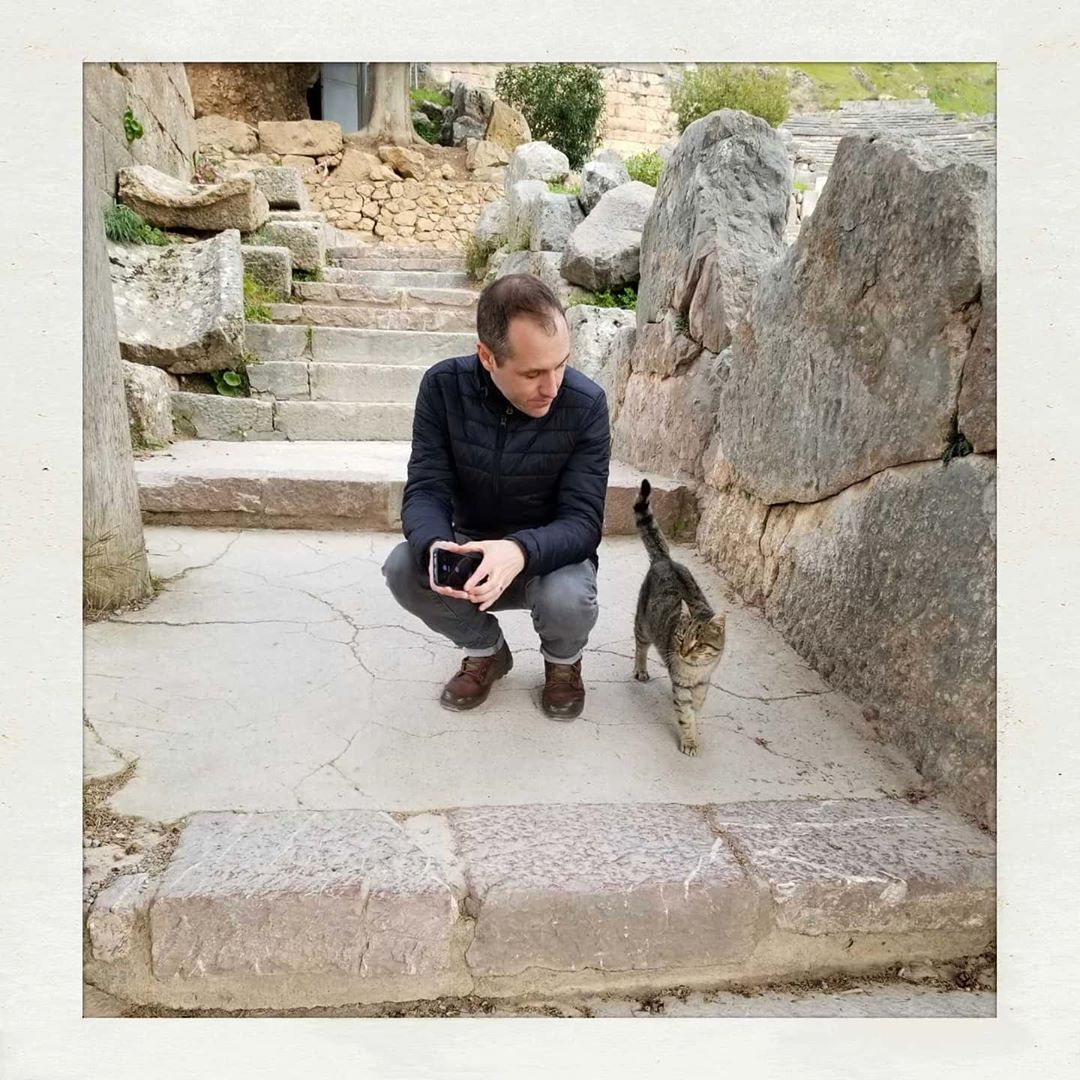
Back at the entrance, we headed a bit further along the main road towards a few additional historic sites that are somewhat separate from the main sanctuary.
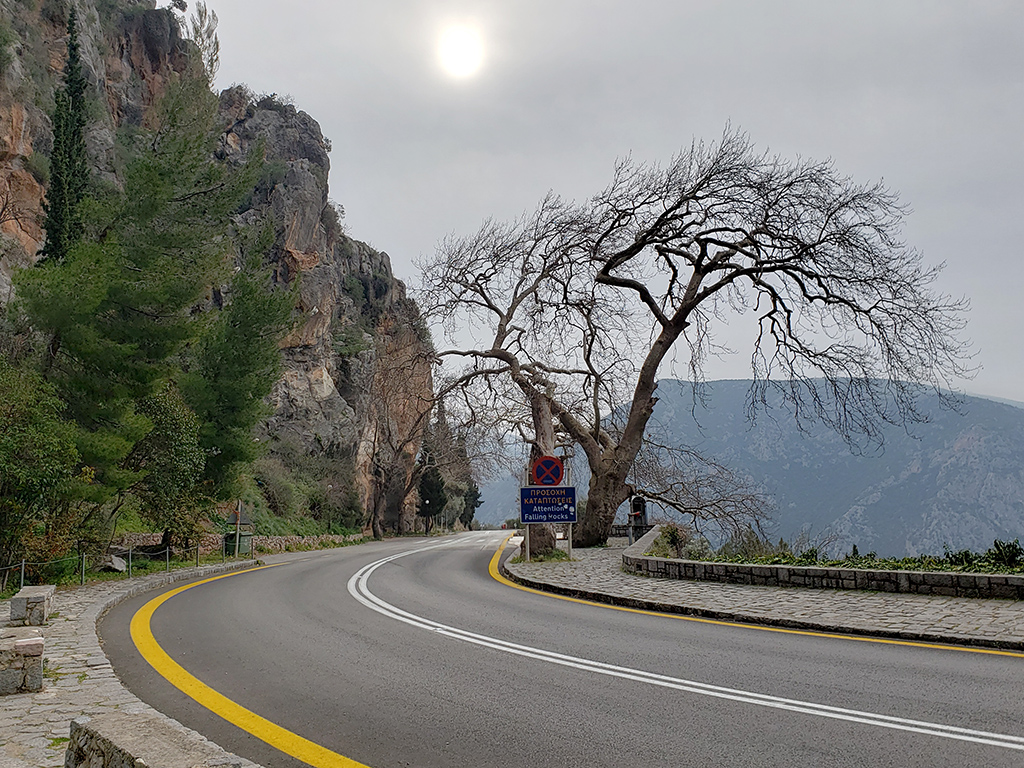
The first of these, the Kastalian Spring, is sadly not as interesting to visit as it once was. Today it has been fenced off for safety reasons and we could only glimpse a deep crevice in the rocks where the water once ran.
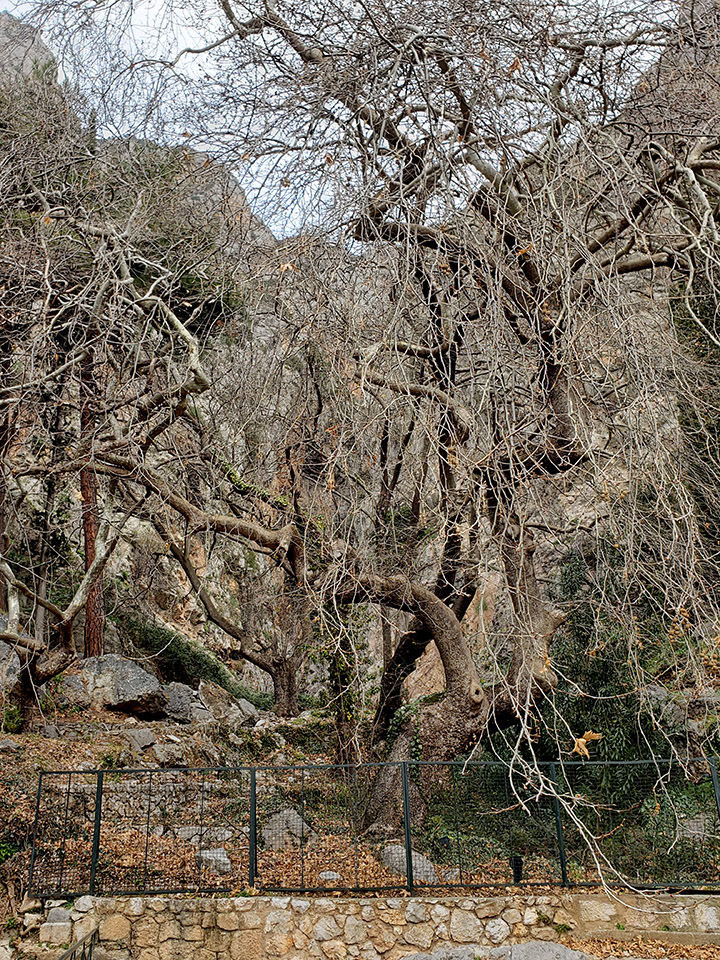
Further long we passed by the Gymnasium of Delphi, which was also closed to visitors, presumably due to safety reasons as some of the walls seem to be heavily reinforced against collapse. This site, however, was easier to appreciate with the views from above.
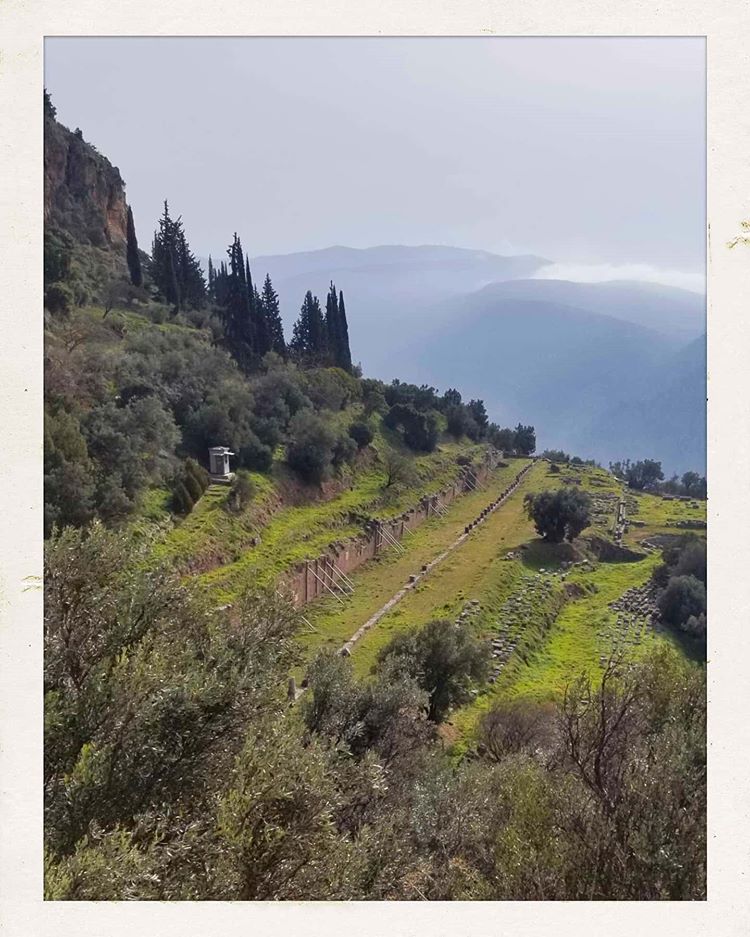
Furthest away was the Sanctuary of Athena Pronaia, and thankfully this was free to visit and inspect up close. The sanctuary is located down a steep path in a peaceful valley, sheltered from the road and the modern town by a grove of olive trees.
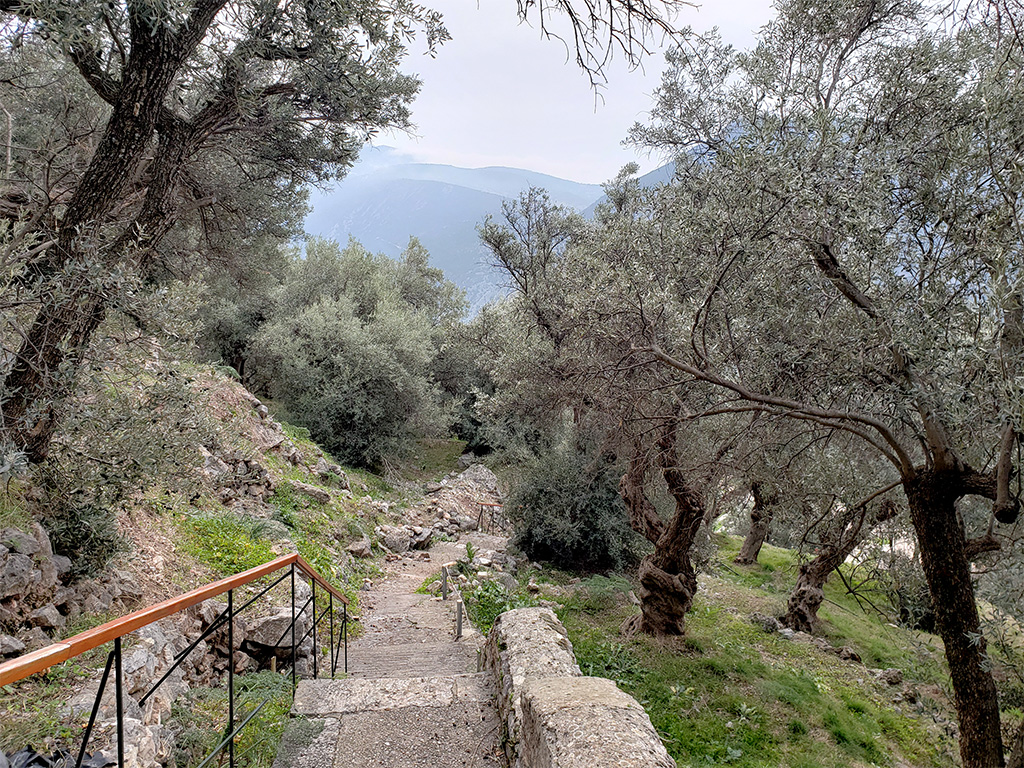
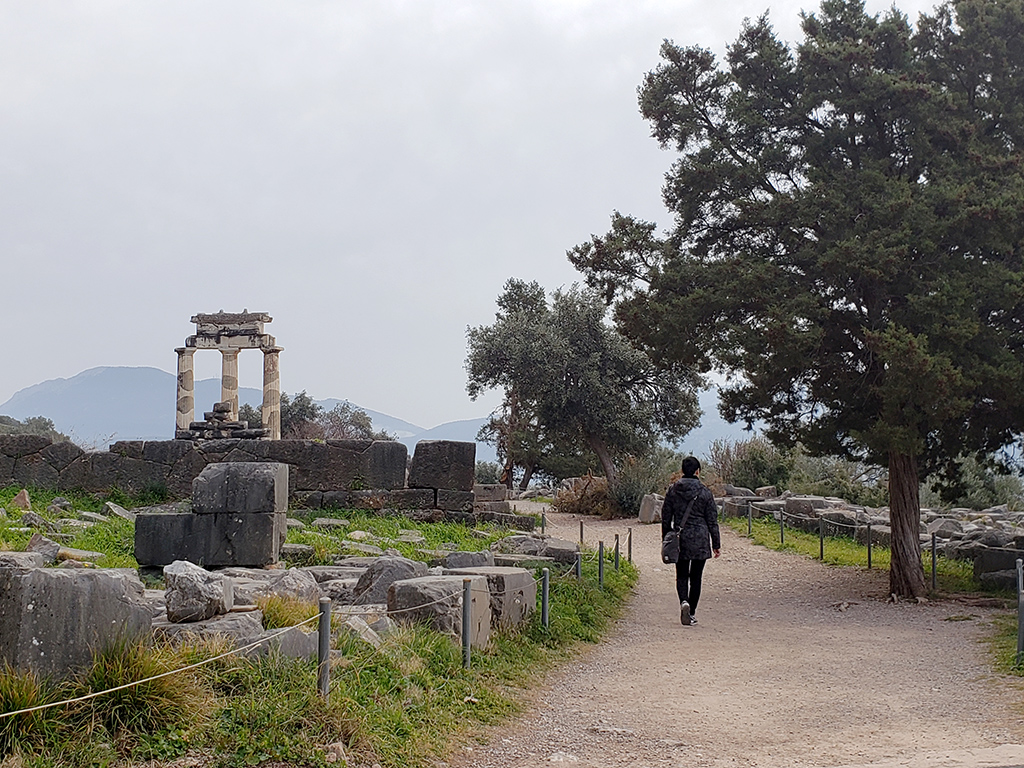
The sanctuary is a comprised of a cluster of buildings and temples. Only one, the Tholos of Delphi, has been partially restored and this circular temple is what impresses most.
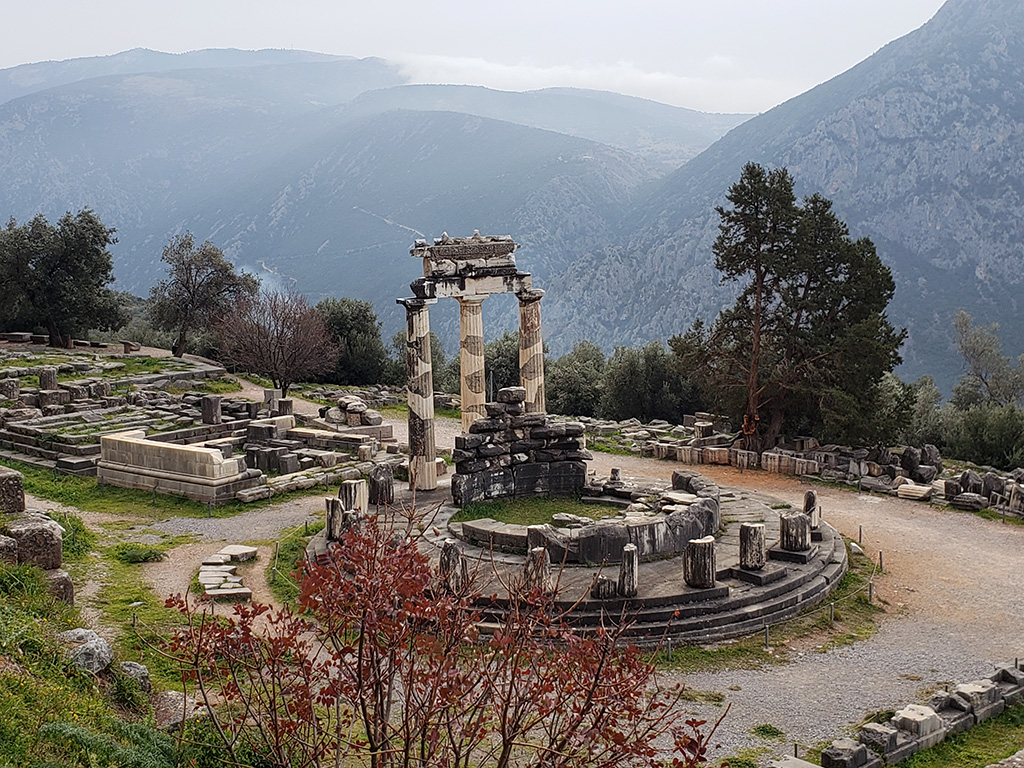
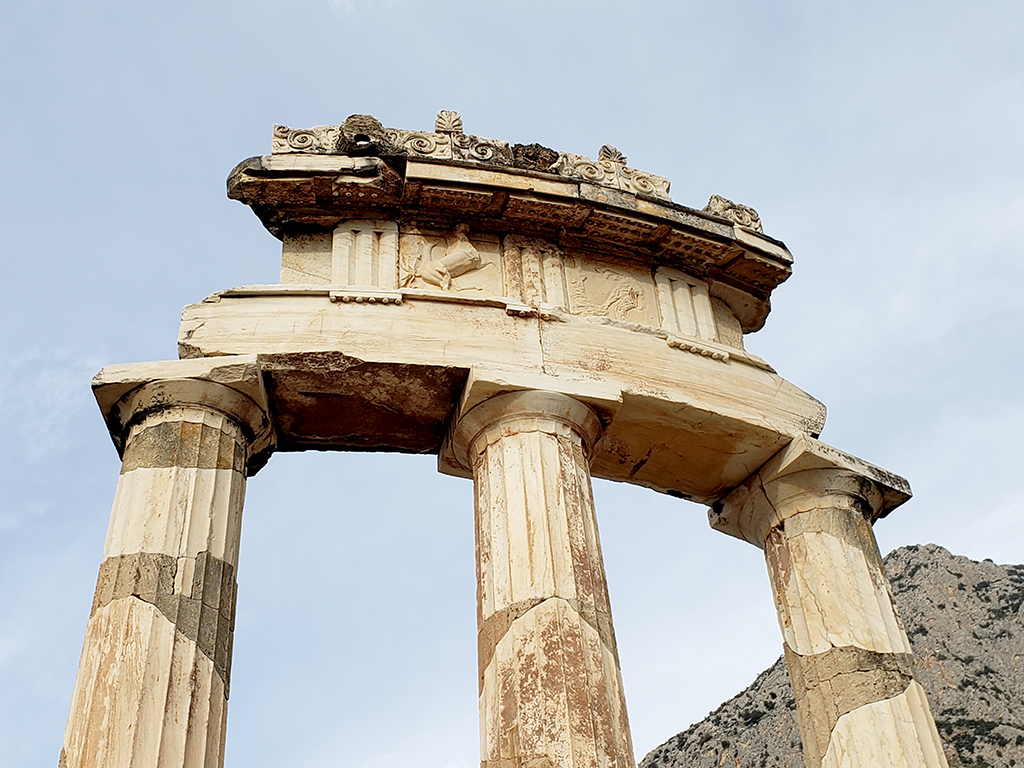
Nearby, a worker or volunteer was sitting quietly under an enormous olive tree and writing in his notebook.
